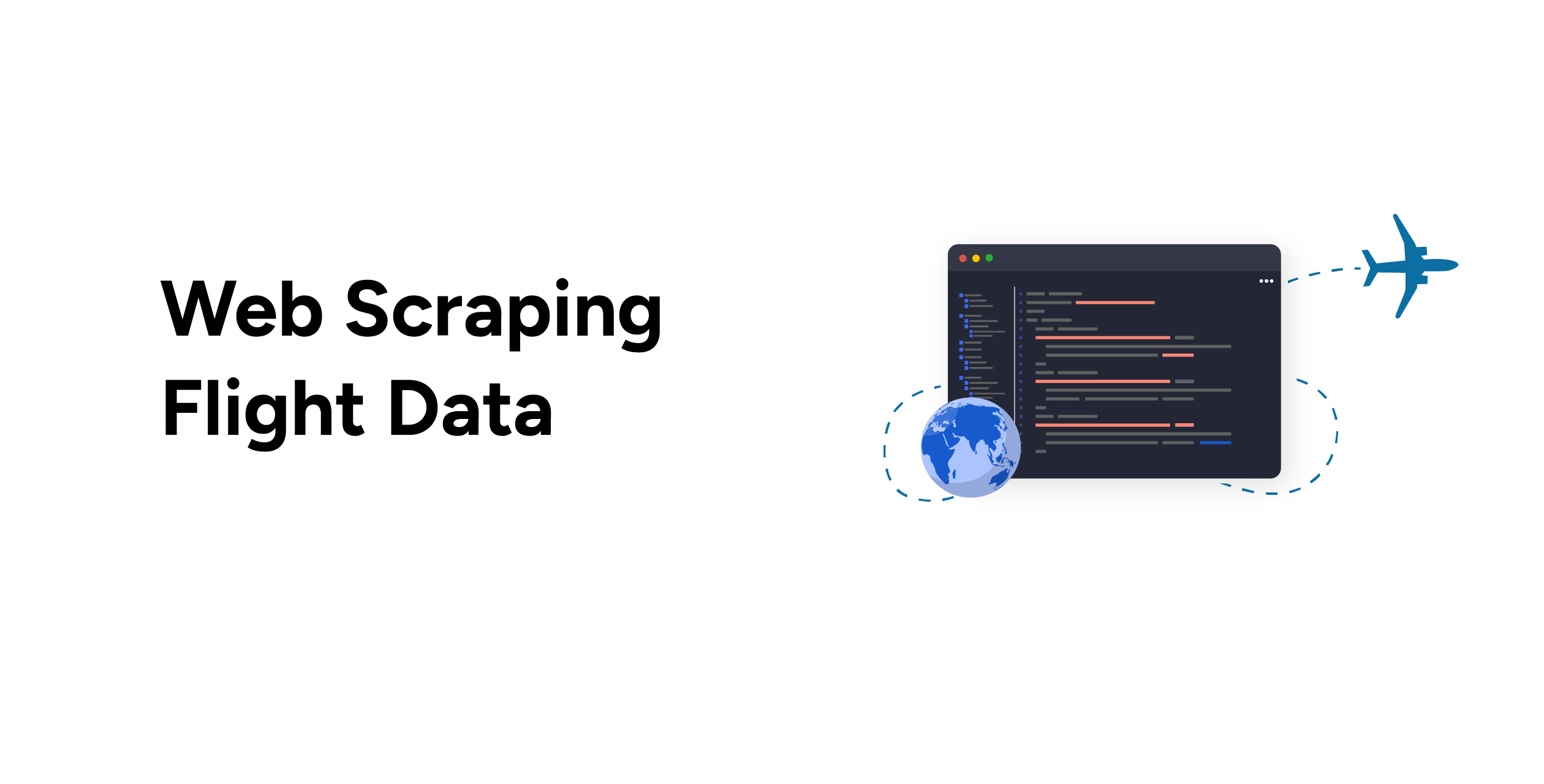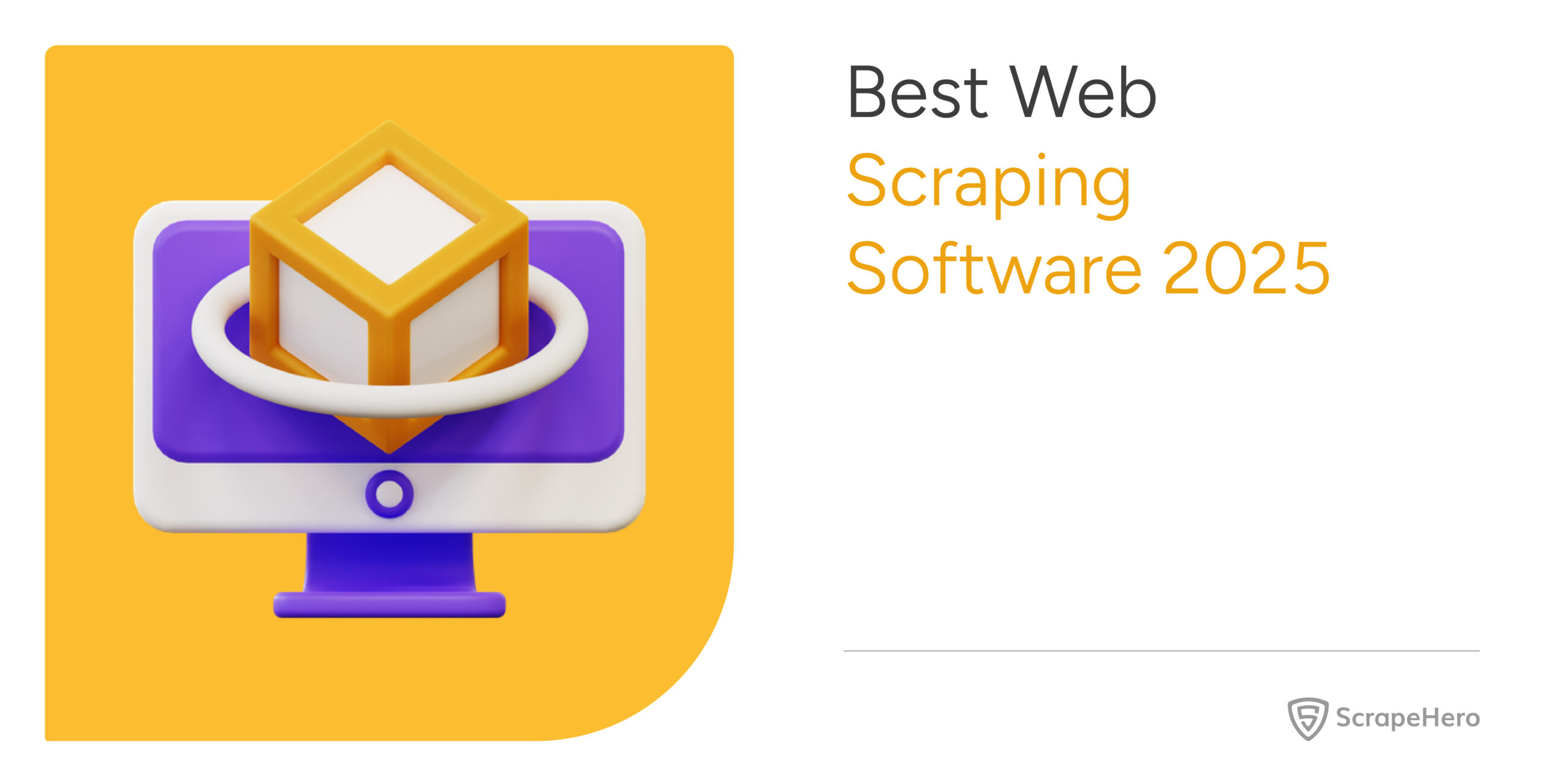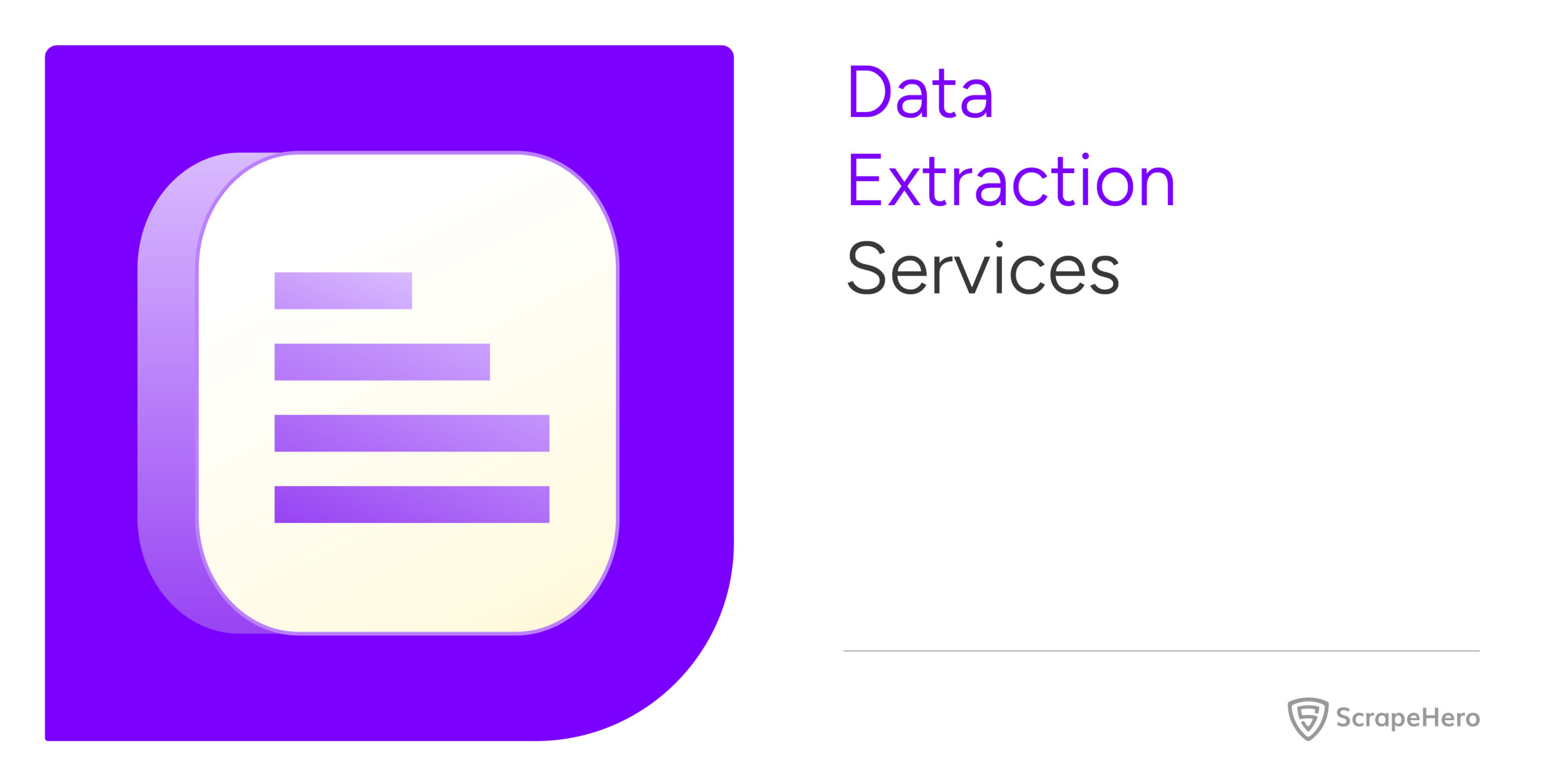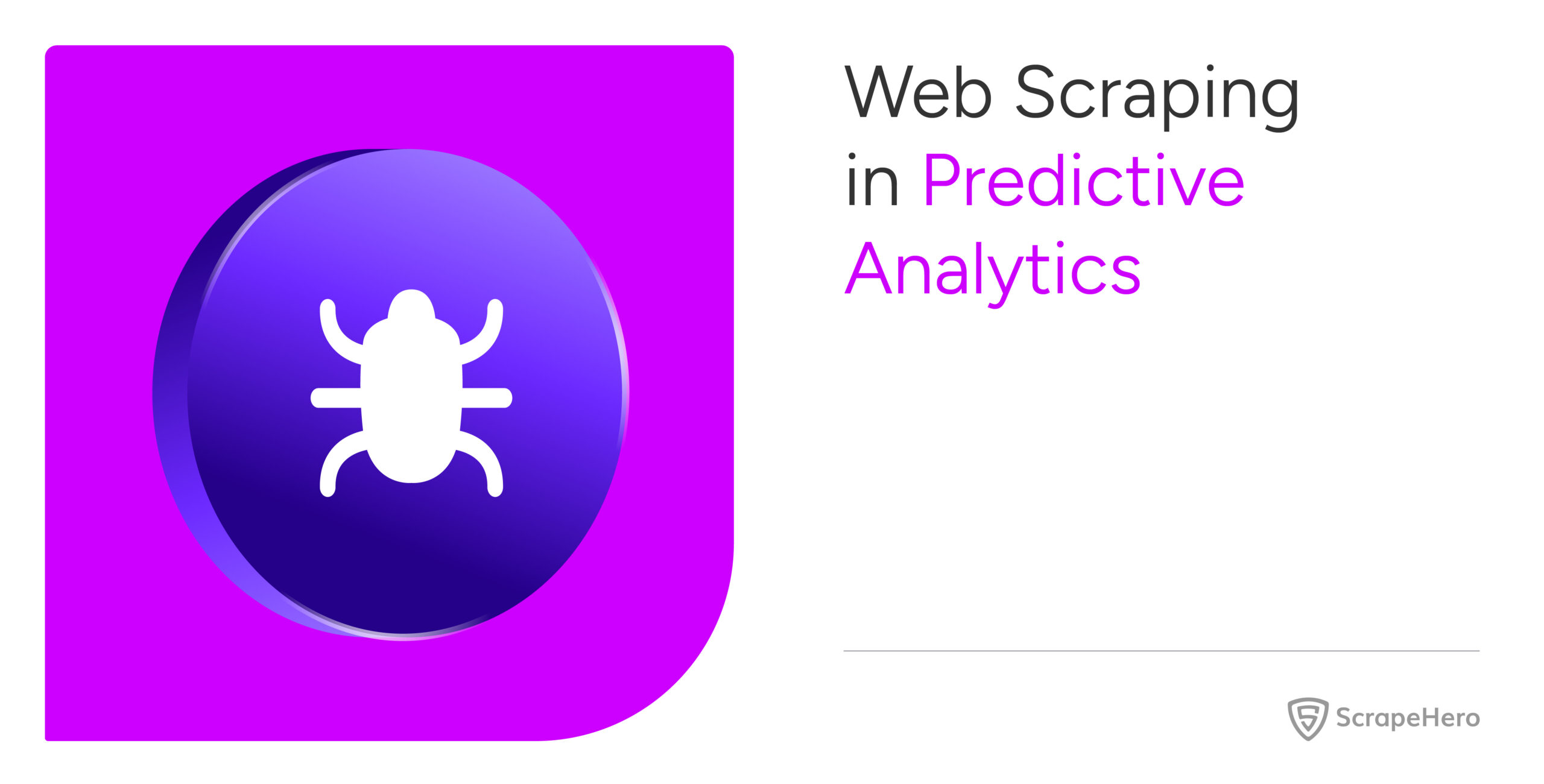The travel industry has recently witnessed a transformative shift, moving from traditional booking methods to a practice where everything happens digitally. This evolution impacts the growing importance of data in influencing travel experiences, optimizing operations, and enhancing customer satisfaction. The concept of web scraping flight data emerges as a key tool in this scenario.
Web scraping is the process of extracting data from websites. When applied to flight data, it becomes a powerful technique for gathering real-time information on flight schedules, prices, and availability from various airline and travel websites.
Let’s dive into the advantages of scraping flight data, highlighting how it can open up new opportunities for efficiency and strategic planning in the travel sector.
What is Travel Data Scraping, and How Can the Travel Industry Benefit from It
Travel data scraping is the process that extracts information from travel-related websites. This method is used widely to collect comprehensive data on flight prices, hotel rates, travel packages, etc., from various online platforms. The collected data can then be analyzed to understand trends, make price comparisons, and take informed decisions.
The benefits of travel data scraping for the travel industry are many. For travel agencies, airlines, hoteliers, and online travel platforms, it gives a competitive edge, enabling them to offer the most attractive deals and optimize their services to align with consumer demands. It provides a foundation for dynamic pricing strategies, market trend analysis, and targeted service offerings based on real-time data insights.
For consumers, travel data scraping offers the resources to find out the best travel options available. It enhances transparency in pricing and availability, helping travelers make informed decisions and maximize their travel experiences.
Don’t want to code? ScrapeHero Cloud is exactly what you need.
With ScrapeHero Cloud, you can download data in just two clicks!
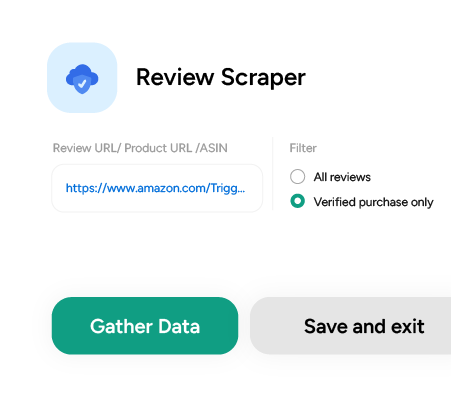
What is Web Scraping Flight Data?
Web scraping flight data involves using automated tools to extract information from airline websites and online flight databases. This process allows individuals and businesses to gather comprehensive details on flight schedules, ticket prices, availability, and other related information without manually searching through each site.
By scraping airline data, analysts can efficiently collect vast amounts of flight information to monitor trends, compare airline offerings, and make informed decisions based on real-time data. This technique streamlines the gathering of flight information, making it a useful strategy for those looking to scrape airline data for research, competitive analysis, or travel planning purposes.
Is Flight Data Publicly Available?
Flight data, which includes schedules, fares, and operational details, is largely accessible to the public through various channels. Airlines and airports frequently publish this information on their websites, enabling travelers and professionals alike to stay informed about flight options and statuses.
Additionally, online travel agencies (OTAs) and flight comparison platforms are valuable resources for comparing airline offerings and making travel arrangements. There are also platforms that offer insights into flight routes, statuses, and aircraft positions.
What Data Can be Extracted by Scraping Airline Websites and OTAs?
Scraping airline websites and OTAs can yield information that is vital for travelers, analysts, and businesses focusing on the travel and tourism sector. This data has various applications, from competitive analysis to enhancing customer travel planning experiences. The types of data that can typically be scraped include:
- Carrier Name: Identifies the airline operating the flight.
- Flight Number: The unique identifier for each flight, crucial for tracking and booking.
- Flight Duration: The total time from departure to arrival, helping passengers plan their schedules.
- Total Number of Flights: Offers insights into flight frequency and availability.
- Total Cost: Critical for budget planning and price comparisons.
- In-flight Facilities: Information on amenities such as Wi-Fi, meals, and entertainment options.
- Seating Arrangement: Details on seating configurations, including class categories and legroom.
- Airport Information: Data on departure and arrival airports, including terminals and gate numbers.
- Number of Stops: Indicates direct flights versus those with layovers, affecting travel time and comfort.
- Changes in Flight Schedule: Updates on any alterations to the original flight times, crucial for travel planning.
By scraping this data from airline websites and OTAs, stakeholders can gain insights into flight options, pricing strategies, and service offerings.
Now that you have an understanding of the availability of flight data and what data can be scraped, let us look into how the airline industry uses data.
What are the Benefits of Web Scraping Flight Data?
Web scraping flight data is a useful technique that can come in handy for both businesses and consumers in the travel industry. Here’s a deeper look into the benefits:
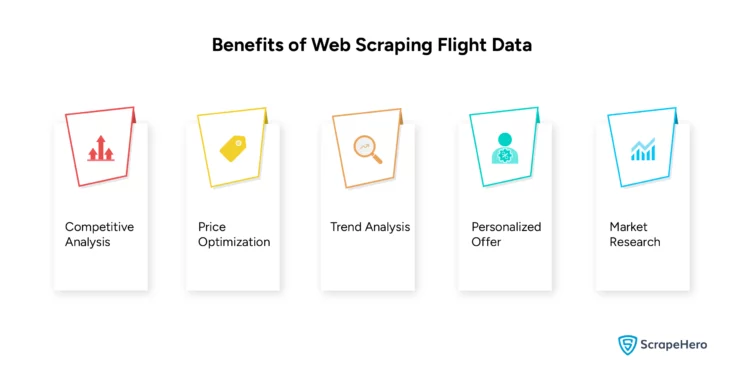
Competitive Analysis
The airline industry is a highly competitive industry, and staying ahead requires a deep understanding of your competitors’ strategies. Web scraping allows businesses to systematically gather and then analyze data from multiple airline websites.
This comprehensive approach ensures that comparisons are not just limited to prices but also cover flight schedules, service quality, and additional offers. By having a holistic view of the competition, companies can make informed decisions to enhance their market position.
For example, a travel agency can make use of scraped data to identify which airlines offer the best deals or exclusive routes and then promote these findings to attract customers looking for value and unique travel experiences.
Price Optimization
Price is a critical factor influencing consumers’ booking decisions. Web scraping for flight prices allows airlines and travel agencies to monitor the pricing scenario in real-time. This dynamic approach to pricing, supported by current and accurate data, allows companies to adjust their offers based on demand, competition, and other market forces. Optimizing prices in this way can help maximize revenue.
An airline, for instance, might observe a competitor’s price drop for a popular route and respond by offering a limited-time promotion, capturing price-sensitive travelers.
Trend Analysis
Understanding market trends is important for long-term planning and strategic decision-making. By scraping flight data, you can analyze historical and current trends in travel preferences. These can include popular destinations, seasonal fluctuations in demand, and emerging markets. This insight can help businesses anticipate future movements and adapt their offerings accordingly.
For instance, a tourism board might use scraped data to discover that there is an increasing interest in eco-tourism destinations. They can then collaborate with airlines to promote sustainable travel packages.
Personalized Offers
In today’s market, personalization is key to attracting and retaining customers. Scraping airline data allows travel businesses to understand individual preferences and past booking behaviors. This information can be used to tailor recommendations and offers that resonate with each customer.
Market Research
For any business, understanding the broader market is crucial. Web scraping flight data provides the data enough for comprehensive market research, revealing insights into consumer behavior, pricing strategies, and the overall health of the travel industry. These insights are invaluable for forecasting and developing strategies that align with market dynamics.
For example, a market research firm can compile and analyze flight data to report on the impact of global events on travel demand. They can then offer airlines and travel agencies data-driven strategies for recovery and growth.
How Do You Scrape Airline Data: By Yourself or With an Expert?
When it comes to web scraping flight data, you have a choice of either doing it by yourself or outsourcing it to an expert. While the DIY approach might seem appealing due to perceived cost savings, the advantages of working with a professional service like ScrapeHero far outweigh doing it alone.
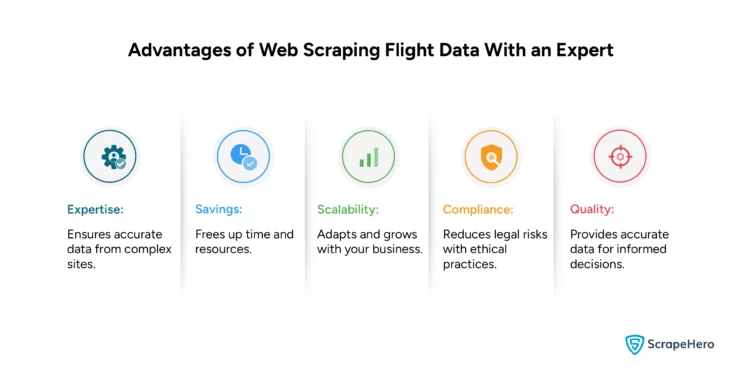
Why ScrapeHero is a Better Choice
Choosing the right partner for web scraping flight data is critical. ScrapeHero stands out as a preferred choice for several reasons:
-
Custom Solutions
ScrapeHero offers tailored scraping solutions designed to meet specific business needs.
-
Advanced Technology
Utilizing state-of-the-art technologies and algorithms, ScrapeHero ensures efficient data extraction from even the most sophisticated airline websites.
-
Data Integrity
With a focus on providing clean, structured, and ready-to-use data, ScrapeHero eliminates the need for additional data processing, saving businesses valuable time and effort.
-
Comprehensive Support
ScrapeHero doesn’t just deliver data; we provide ongoing support and consultancy to help businesses leverage the data effectively.
-
Cost-Effective
Despite the high-quality service, ScrapeHero offers cost-effective solutions that provide a high return on investment, making professional web scraping accessible to businesses of all sizes.
-
Legal Compliance
ScrapeHero prioritizes legal and ethical scraping practices, ensuring that data collection is conducted without violating website terms of service or legal regulations.
While scraping airline data by yourself might seem like a viable option, the complexities and challenges of web scraping for flight prices and airline information often necessitate expert intervention. Partnering with ScrapeHero not only enhances the efficiency and effectiveness of data collection efforts but also ensures compliance, reliability, and scalability.
Closing Thoughts of Web Scraping Flight Data
As the travel industry continues to evolve in a digital-first world, the ability to efficiently gather and analyze flight data has become more important. Navigating the complexities of scraping airline websites, OTAs, and flight comparison platforms, however, presents many challenges. This is where the expertise of a professional web scraping service provider becomes essential.
ScrapeHero is a reliable partner in this domain, with expertise in web scraping flight data and beyond. With ScrapeHero, you can bypass the steep learning curve and technical barriers associated with data scraping. Whether you’re looking to scrape airline data for competitive analysis, market research, or to create personalized offers for your customers, we have the expertise necessary to turn web data into actionable insights.
Frequently Asked Questions
-
How can I scrape an airline website to extract the prices?
By utilizing web scraping tools or services, you can automate scraping flight prices and other flight data from airline websites. This involves programming your scraper to navigate the site, extract relevant price information, and store it for analysis.
-
Can I scrape Google Flights for price tracking?
Yes, scraping Google Flights is a common practice for tracking flight prices across different airlines and routes. This can be done by setting up a scraper that mimics user queries and collects pricing data.
